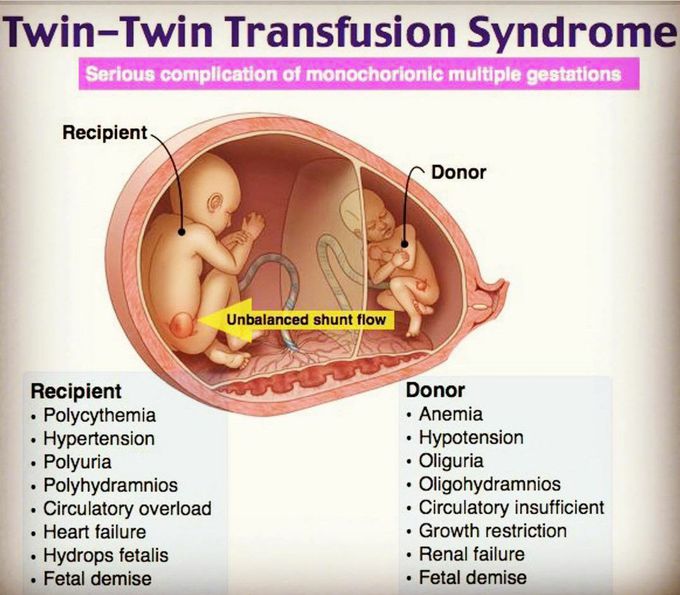


Twin-Twin Transfusion syndromes
Twin to twin transfusion syndrome (TTTS) is a disease of the placenta (or afterbirth) that affects identical twin pregnancies. TTTS affects identical twins (or higher multiple gestations), who share a common monochorionic placenta. The shared placenta contains abnormal blood vessels, which connect the umbilical cords and circulations of the twins. The common placenta may also be shared unequally by the twins, and one twin may have a share too small to provide the necessary nutrients to grow normally or even survive. The events in pregnancy that lead to TTTS - the timing of the twinning event, the number and type of connecting vessels, and the way the placenta is shared by the twins are all random events that have no primary prevention (see section on The Monochorionic Placenta), is not hereditary or genetic, nor is it caused by anything the parents did or did not do. TTTS can happen to anyone.Depending on the number, type and direction of the connecting vessels, blood can be transfused disproportionately from one twin (the donor) to the other twin (the recipient). The transfusion causes the donor twin to have decreased blood volume. This in turn leads to slower than normal growth than its co-twin, and poor urinary output causing little to no amniotic fluid or oligohydramnios (the source of most of the amniotic fluid is urine from the baby). The recipient twin becomes overloaded with blood. This excess blood puts a strain on this baby’s heart to the point that it may develop heart failure, and also causes this baby to have too much amniotic fluid (polyhydramnios) from a greater than normal production of urine. TTTS can occur at any time during pregnancy, even while a mother is in labor at term. The placental abnormalities determine when and to what degree a transfusion occurs between the twins.

